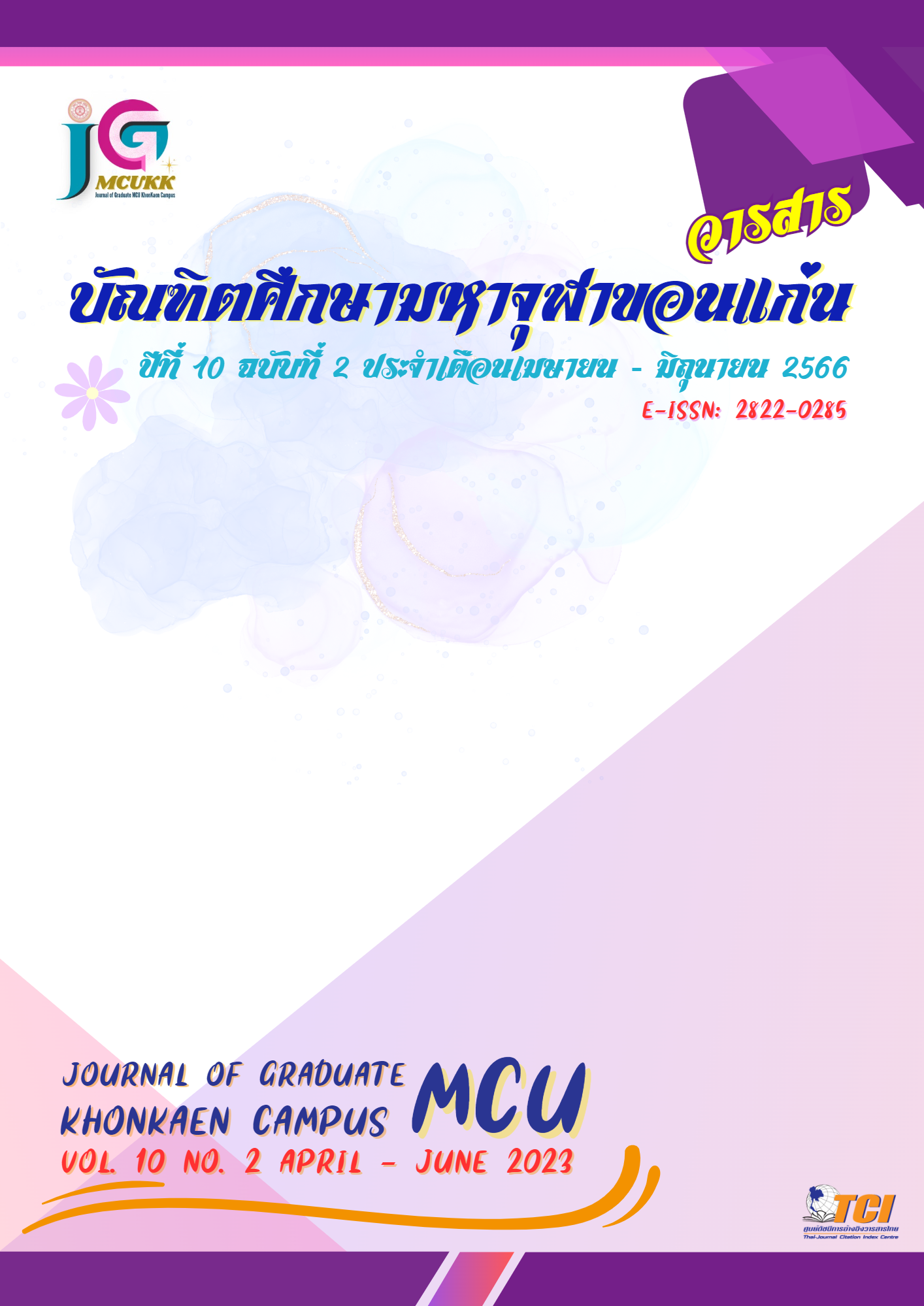The Management Model of Religious Ceremonies and Beliefs About the Bad Luck Rituals in the Organization According to the Buddhist Philosophy of Thai Society in Nakhon Ratchasima Province
Main Article Content
Abstract
The objectives of this research were : 1) to study the management of religious ceremonies and bad luck in Thai society, 2) to study the management of religious
ceremonies and bad luck in Nakhon Ratchasima Province, and 3) to present the management model of religious ceremonies and bad luck. It’s believed in the rituals of the unlucky event of Nakhon Ratchasima Province in its qualitative research. Studying information from Tripitaka, documents, and related research. There were 25 key informants.
The obtained data were interpreted by descriptive analysis.
The research results were as follows:
1. Organizing religious ceremonies related to the bad luck event is something that has been practiced since ancient times. And has been modified to conform to cultural ways and social contexts an ordinance is a model for the execution of the time frame that the event achieves. Although the ordinance is seen as merely coconut milk, not its true essence. But ordinances are important elements of every religion that bring benefits and happiness to the participants.
2. There are 3 stages in the ceremony of the bad luck ceremony: 1) the rituals before death, 2) the rituals during death, and 3) the rituals after death. And in organizing this bad luck, there is also a hidden belief in funeral arrangements, namely 1) the
collection of the body and 2) the unusual treatment of the dead. That is in accordance with the beliefs of the Isan culture.
3. There are 2 forms of religious ceremonies management in Nakhon Ratchasima Province: 1) the form of funeral arrangements. It is a form of funeral ceremony for the deceased who is a general villager. 2) The form of cremation. It is a form of organizing religious ceremonies for individuals who have made good contributions to society in various ways, both of which are considered commemorations of good deeds. and honoring the deceased at the end of their lives.
Article Details

This work is licensed under a Creative Commons Attribution-NonCommercial-NoDerivatives 4.0 International License.
References
มหาจุฬาลงกรณราชวิทยาลัย. (2539). พระไตรปิฎกภาษาไทย ฉบับมหาจุฬาลงกรณราชวิทยาลัย. กรุงเทพฯ: มหาจุฬาลงกรณราชวิทยาลัย.
จรัส ลีกา และคณะ. (2563). การวิเคราะห์คติความเชื่อในการอนุรักษ์ป่าชุมชนของคนอีสาน. วารสารบัณฑิตศึกษามหาจุฬาขอนแก่น, 7(2), 133-149.
ดนัย ไชยโยธา. (2546). สังคมวัฒนธรรมและประเพณีไทย. กรุงเทพฯ: โอเดียนสโตร์.
บุญมี แท่นแก้ว. (2547). ประเพณีและพิธีกรรมพระพุทธศาสนา. กรุงเทพฯ: โอเดียนสโตร์.
พระอธิการสมบัติ ธมฺมานนฺ. (2555). การศึกษาความเชื่อประเพณีการฝังศพของชาวบ้านเชียงเหียน อำเภอเมือง จังหวัดมหาสารคาม. (วิทยานิพนธ์พุทธศาสตรมหาบัณฑิต). พระนครศรีอยุธยา: มหาวิทยาลัยมหาจุฬาลงกรณราชวิทยาลัย.
พระฐตรฐ อธิปญฺโญ (ศิลาศิลป์). (2555). การศึกษาหลักความเชื่อในพิธีศพของชาวพุทธ ตำบลคูคำที่สอดคล้องกับหลักพุทธธรรม. (วิทยานิพนธ์พุทธศาสรมหาบัณฑิต). พระนครศรีอยุธยา: มหาวิทยาลัยมหาจุฬาลงกรณราชวิทยาลัย.
โสภณ เปรมจิตต์. (2564). ศาสนาพิธีเบื้องต้น. เชียงใหม่: สำนักศิลปะและวัฒนธรรมมหาวิทยาลัยราชภัฎเชียงใหม่.
สุเมธ เมธาวิทยกุล. (2532). สังกัปพิธีกรรม. กรุงเทพฯ: โอ.เอส.ริ้นติ้ง เฮ้าส์.

